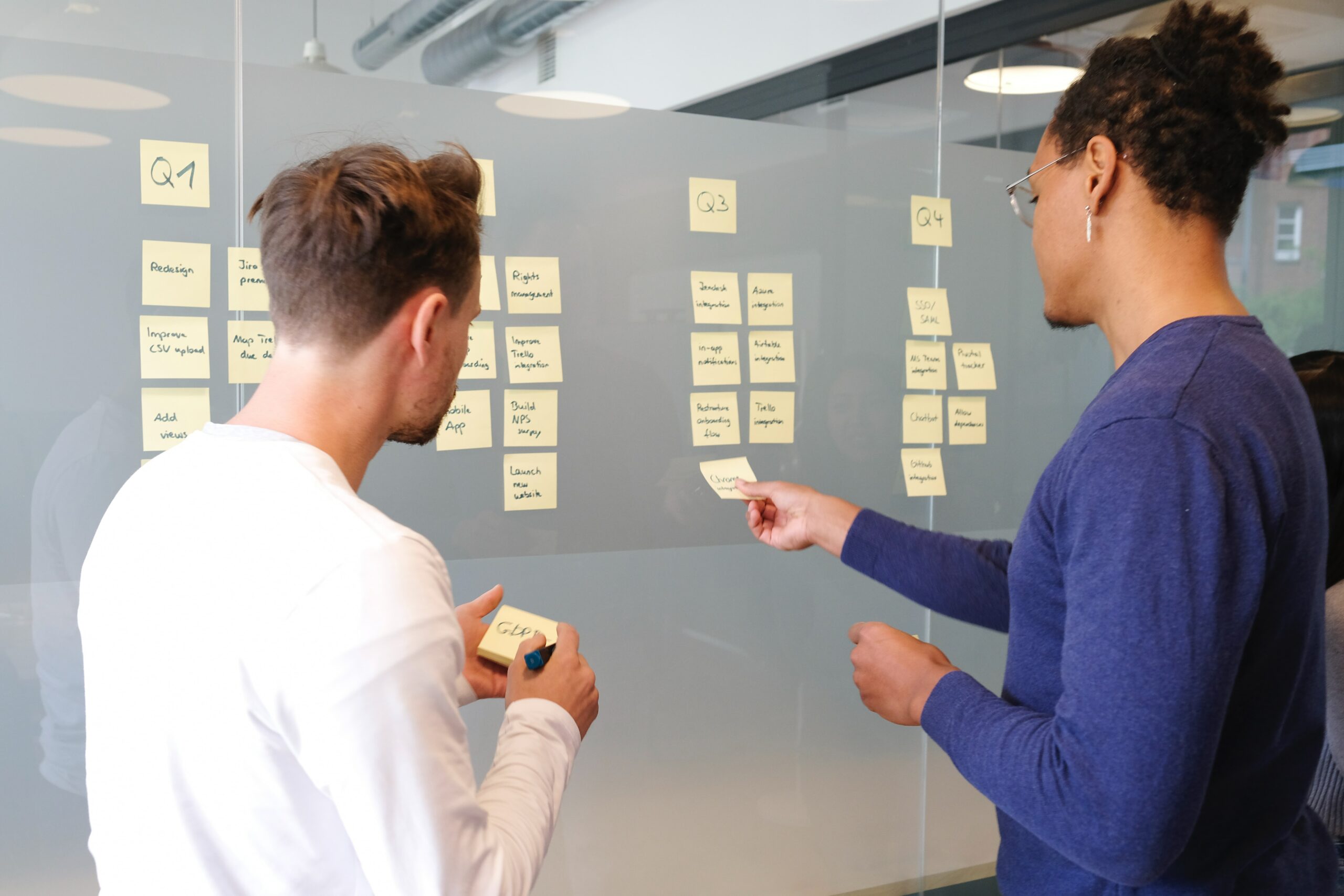You’ve probably heard the saying “teamwork makes the dream work” or “the more the merrier.” In the nonprofit world, these cliche sayings actually ring true. Bringing on new collaborations and fresh ideas only positively impacts your nonprofit. Oftentimes, these are with corporations or local businesses, but they can also form between multiple nonprofits. When done right, collaborations allow for increased exposure and an entirely new audience.
A survey conducted by the Bridgespan Group and the Patterson Foundation shows 91 percent of nonprofits collaborate in some capacity. This may not be directly with one another, but it shows teaming up works. However, there are some general tips you should follow when entering a collaboration with another nonprofit.
Make Sure Your Missions Align
Organizations should make sure their missions make sense in a partnership. Your missions don’t have to be exactly the same, in fact, a slight difference in focuses can actually be beneficial. However, you want it to make sense to potential volunteers and donors. Be sure to sit down and have this conversation before planning begins and get everyone from each organization on the same page.
This is also a great time to lay out common goals and objectives for the year. This makes the ideas more concrete and gives everyone an actionable plan to look forward to carrying out. It also keeps you accountable for your end of the work.
Don’t Let Past Collaborations Taint You
Collaborations can be difficult, but don’t let past experiences define your mentality. Every nonprofit is different and operates in a different capacity. If your team harbors resentment towards a new group before the collaboration begins it can be detrimental to success. Allow each opportunity to start with a fresh mindset and a unified goal.
Take the time to really learn about another organization. Offer training sessions for one another so everyone is fully aware of the missions and personalities involved. This is a good way to address future disagreements and talk about tactics to peacefully negotiate. Fortunately, most people get into the nonprofit world for positive reasons, so they just want everything to go smoothly.
Run it By Board Members and Major Donors
Make sure your executive team runs the idea by big players in your organization. Donors want to have the inside scoop and board members are the deciding factor behind many decisions. They may even have ideas or contacts to organizations you never thought about reaching out to. It’s better to be upfront and ask for advice and opinions than forge ahead.
It’s also beneficial to have this conversation with your staff. Team members will not be happy if they walk into an entirely new organization set up one day. They work for your nonprofit because they love it, so they need to love the collaboration just as much. They will feel mutually respected if told up front.
Communicate Often
It is important to continue communication after the initial meeting. Use different tools like Slack or Microsoft Teams to stay connected with another organization. Take time to plan meetings and go over monthly goals to ensure the collaboration is actually beneficial. Also, make sure the other team knows exactly who to contact on your team if they have a question and vice versa.
It could be helpful to designate an entire collaboration committee on both ends. This ensures each organization has a go-to group focused on the partnership. Ideas can get lost in the shuffle of everyday happenings and it is essential to designate enough time to idea-sharing to make the collaboration successful.
The best part—the other organization probably understands how your team runs better than collaborations with businesses or other entities. They understand when your team has an event coming up that you’re extremely busy, but they also have resources that can probably help.
Utilize Resources
That brings us to our next point—utilizing all resources. Make sure you fully understand the scope of the resources all members of the collaboration have to offer. Maybe one team has an in with a local venue that is perfect for events. Another has a media contact that always pulls through on organization coverage. Be open and what each team can offer so that every resource is utilized to its fullest potential.
Your organizations can easily pool:
Funds
Contacts
Event spaces/decor
Volunteers (if the volunteers are interested)
Social media presence
Knowledge of the industry
Advocate for Each Other
Don’t become so connected in a collaboration that you start functioning as one unit (unless that is your ultimate goal). Remember you are trying to help each other grow independently while also working together. If one organization has a cause they strongly believe in, be sure to advocate alongside them.
Just be sure not to cross the line and start lobbying. Too much lobbying by nonprofits is not allowed by the IRS and can do much more harm to the collaboration than good. Focus your efforts on educational resources and meaningful conversations to spark interest on a specific topic in your community. This is a great way to create longstanding change because more eyes are on the conversation and people see multiple organizations coming together to address a common problem.
Listen to the Public
When you have these conversations and meet members of the community, listen to their advice. See if they are receptive to the collaboration and ask for their input. They might even have ideas for future partnerships. Many community leaders with helpful backgrounds attend nonprofit events and they can give you a fresh perspective from the outside looking in.
Listening to the public also helps your team recognize when they need to change course. Maybe a joint program you thought was doing really well isn’t as impactful anymore. The public sees the direct impact you have on their community, so they know when things are working and when they need to be updated. This can help your collaboration grow stronger and stay connected to those you serve.
Start Small
Nonprofits can run into issues when they take on too much too fast. Start with one local collaboration to test out the waters. This way you can easily pool resources and see if your team has the bandwidth to expand. If this happens successfully, then it’s time to jump into bigger endeavors. Some organizations form entire coalitions focused on similar change. Starting small allows you to get your joint workflow down and have systems already in place for when it’s time to grow.
On the flip side, don’t be afraid to take a risk and reach out to a larger organization in your area. You probably took a risk when you started your nonprofit in the first place. If you are just getting off the ground or struggling to find traction, linking to a larger organization can entirely transform your nonprofit. Just ensure you have something to offer them so they understand the value behind the partnership.
However, if your nonprofit is struggling to make ends meet, you also need to look at the foundation of your organization. You don’t want to become a burden to another nonprofit and you also need to fix your structure to allow for more success in the future. There are plenty of ways to revamp your concept so that you gain donors and stability.
Co-Host Fundraisers or Events
Co-hosting not only takes some of the work off your organization, but it is also a really fun way for people to get involved. If you are an animal-based organization you could run an adoption event with the organization you collaborated with. The idea of puppies draws people in, but you get to promote their mission at the same time. Next time, focus more on their concepts and bring some of your common attendees to the event. You have more freedom to switch up themes and venues because you are promoting two different causes.
Ultimately, the entire idea of collaboration is to spread ideas, support, and connections throughout a community. It not only benefits the organizations involved but also local supporters. People love to share kindness across multiple platforms. These collaborations give everyone the opportunity to make a larger impact. However, every once in a while, a partnership can go bad.
Know When it’s Time to End a Partnership
Not all partnerships are meant to last in the long run. If you find it difficult to communicate, resolve conflicts, or the partnership just doesn’t seem beneficial, it may be best to end. This doesn’t always have to be a bad thing. The collaboration can end on a good note and you can continue to support each other from the sideline in the future. It can actually be a relief to both sides if the partnership was more work than beneficial. It also allows both of you to move on to better-suited partnerships in the future.
Endless Growth Potentials
Ultimately, collaborations with other nonprofits help you see things in a new light and give your organization access to new resources. They can make a stagnant program take off or an event flourish. Take time to invest in this new partnership and both sides can find endless growth going forward.
By Kaitlin O’Dougherty





